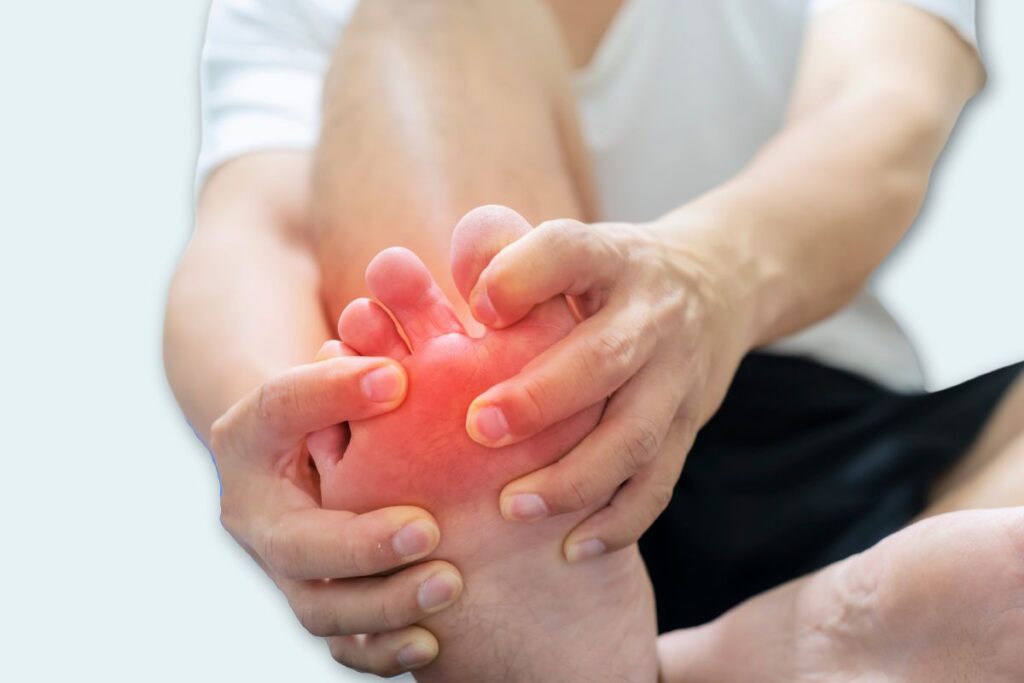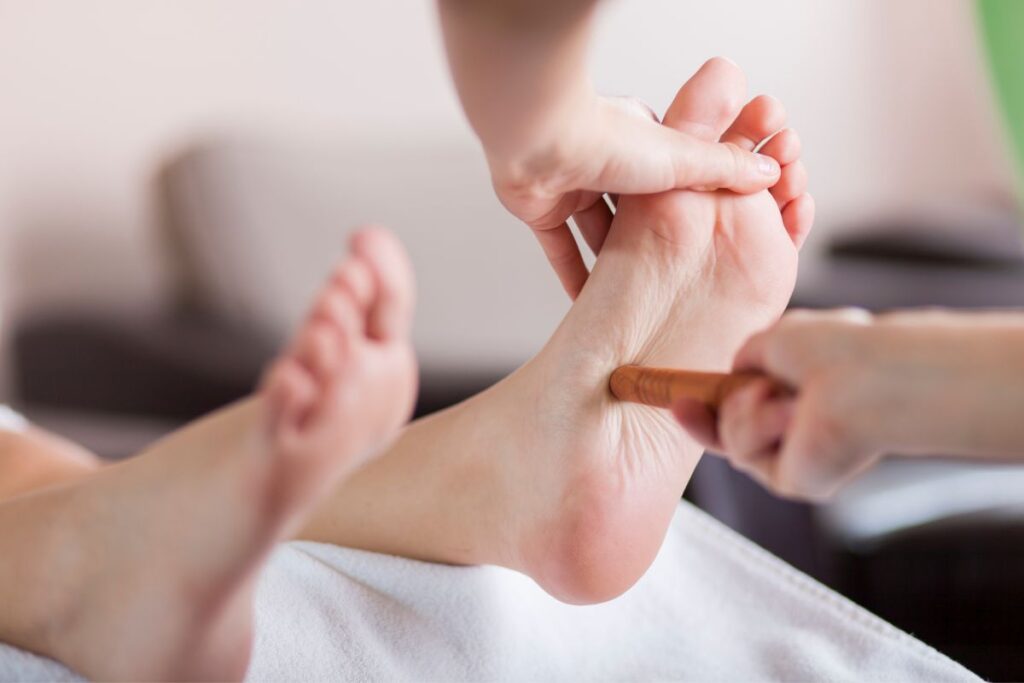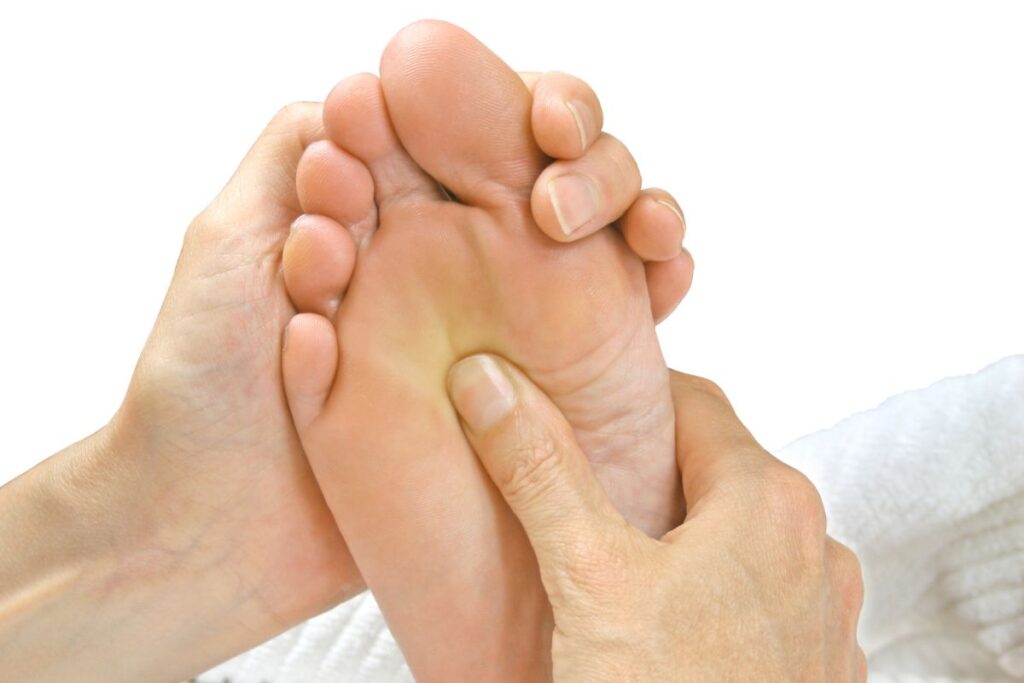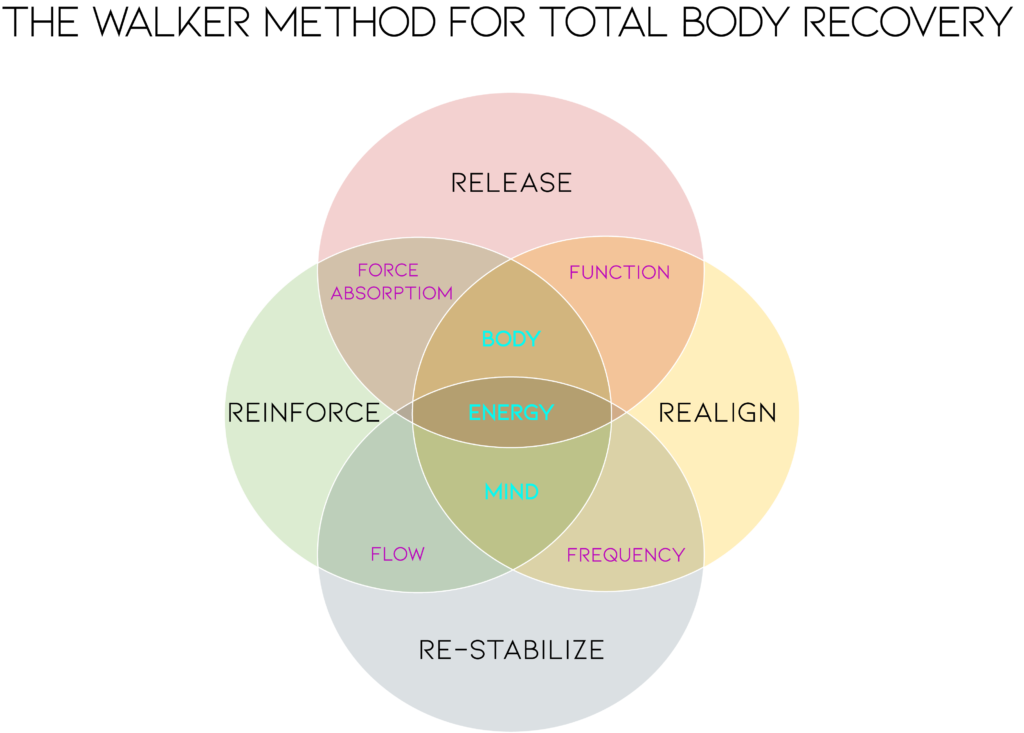Neuroma/Morton's Neuroma
I called DL and my toe was fine the next day!

Morton's Neuromas
Explanation and symptoms
Neuromas, specifically a Morton’s neuroma, which is found in the foot, is a painful condition characterized by the thickening or enlargement of a nerve in the ball of the foot. It typically occurs between the third and fourth toes. This enlargement of the nerve can cause compression and irritation, leading to a variety of symptoms and change one’s walking pattern.

Symptoms of Neuroma:
- Pain: The hallmark symptom is pain, typically described as a sharp, burning, or shooting pain in the ball of the foot. The pain may radiate into the toes.
- Tingling or Numbness: Some individuals may experience tingling or numbness in the affected toes.
- Burning Sensation: The sensation of a burning ball under the foot is also common.
- Foot Discomfort: The affected foot may feel like there is an object or fold in the sock, even when there isn’t one.
Causes: Morton’s neuroma is primarily caused by:
- Repetitive Stress: High-impact activities or wearing tight, ill-fitting shoes can lead to repetitive stress on the forefoot and contribute to the development of a neuroma.
- Foot Structure: People with certain foot structures, such as high arches or flat feet, may be more prone to neuromas.
- Inflammatory Conditions: Inflammatory conditions, such as arthritis, can also contribute to neuroma formation.

Traditional Treatment Model
The goal of the Traditional Treatment Model is relieve symptoms and reduce pressure on the affected nerve

Footwear Modification

Orthotics Insoles

Cortisone Injections

Physical Therapy

Footwear Modification

Medication

Surgery

Physical Therapy
- Footwear Modification: Wearing shoes with a wide toe box and low heels can alleviate pressure on the forefoot and reduce irritation.
- Orthotic Insoles: Custom or over-the-counter orthotic insoles may provide support and cushioning, which can reduce pain and discomfort.
- Cortisone Injections: Corticosteroid injections into the area around the neuroma can help reduce inflammation and relieve pain.
- Physical Therapy: Exercises and stretches can help strengthen the foot muscles and improve balance.
- Medications: Nonsteroidal anti-inflammatory drugs (NSAIDs) can be used to manage pain and inflammation.
- Surgical Intervention: In cases where conservative treatments are ineffective, surgical removal of the neuroma may be considered.
Common Complications of Morton’s Neuroma:
- Recurrence: Neuromas may recur in some cases, especially if the underlying causes are not addressed.
- Surgical Complications: Surgical removal of the neuroma may lead to complications such as nerve damage, infection, or scarring.
- Incomplete Relief: While many people experience relief with treatment, some may continue to have lingering symptoms.
- Alterations in Foot Function: Pain and surgery may result in changes in foot biomechanics, affecting gait and balance.
functional corrective neuroma Treatment
the Root Cause of a Morton's neuroma
Neuroma’s are like calluses of the nerve. It is a buildup or a thickening of nerve tissue because of a buildup or friction or pressure. When connective tissue is stressed, it gets bigger to protect itself. With calluses it is a buildup of skin with Neuroma’s it is a build up of nerve. In both cases the cause is excessive stress or pressure to the area.
The root causes of a Morton’s Neuroma, are abnormal forces acting to increase pressure at a particular place in the ball of the foot.These abnormal forces are caused by skeletal misalignments and connective tissue restrictions in the toes, foot, lower leg, thigh, hip and even extending up to the pelvis. Identifying the correct source of the abnormal forces is critical to pain relief and long-term success.
There are over a hundred connective tissues impacting over 56 joints, that have the potential to impact the big toe joint, the area impacted by this diagnosis. This can be overlooked by some professionals and lead to a chronic and persistent problems.
Comprehensive Treatment of a Morton's neuroma

Using Functional Diagnostic Evaluation and The Walker Treatment Method™ the same techniques that I teach Podiatrists, Physical Therapists, and Pedothists internationally, we pinpoint the misalignments and restricted connective tissue that cause the build up of nerve tissues and other potential factors that contributing to your unique symptoms.
Functional Diagnostic Evaluation is the technique that identifies the specific connective tissue restrictions causing pain and dysfunction.
Using The Walker Treatment Method™, we systematically address each component causing pain and inflammation to resolve a Morton’s Neuroma naturally.

The Walker Treatment Method™
- Decreases pain by offsetting the forces on the joint and with non-prescriptive modalities.
- Corrects abnormal forces using manual therapy, taping/bracing, specific rebalancing exercises.
- Stabilizes the painful areas by addressing inflammation, appropriate strengthening, and specific taping.
- Prevent future problems by educating patients and addressing release, alignment, and stabilization of the entire lower body.
- Reverses negative compensations that have occurred due to changes in walking due to pain
- Addresses root causes of the problem multidimensionally.
COMPARISION OF TRADITIONAL TREATMENT AND THE WALKER TREATMENT METHOD™

|
PAIN RELIEF | STABILIZE THE JOINT | CHANGE THE FORCES | PREVENTION FROM FUTURE PROBLEMS | ADDRESSES THE ROOT CAUSE | SUCCESS/SATISFACTION |
|---|---|---|---|---|---|---|
| FOOTWEAR | indirectly | no | yes | no | no | temporary |
| INJECTION/NSAID | possibly | no | no | no | no | temporary |
| ORTHOTICS | indirectly | no | yes | no | no | average 47% |
| TAPING | possibly | yes | yes | no | no | temporary |
| PHYSICAL THERAPY** | possibly | possibly | possibly | possibly | possibly | varies |
| CHEILECTOMY | possibly | no | no | no | no | average 77% |
| FUSION | usually | yes | no | no | no | average 90% |
| JOINT REPLACEMENT | possibly | no | no | no | no | average 85% |
| WALKER METHOD* | indirectly | yes | yes | yes | yes | so far 98% |
**Physical therapy: Results will vary based upon the therapist’s experience. As a patient it is important to inquire the level of experience and success of any professional that you are seeking for help.
*Data is base upon post intervention survey report after program completion.
If you are aligned to treating your Morton’s Neuroma in a corrective, comprehensive, way here’s how:
The best time to resolve Morton’s Neuromas naturally without surgery, medication, and costly orthotics is when you first experience symptoms.
The second-best time is now.
Not sure what to do?
Schedule a special $79 no BS actionable strategy evaluation.
Spaces are limited for this special offer!

Who is DL Walker, BS., MS., Ed, PT?
Deborah L Walker Goetz, BS., MS., Ed, PT is the creator of unique, comprehensive programs, protocols and course work for organizations, professionals and the public.
As a diagnostic detective she works to identify the root cause of dysfunction that that triggers an the experience of disease, pain, and limitation. Working with clients, she creates a strategic plan of action that aligns with their unique circumstances and empowers them to get the results that they are seeking fast.
DL works both online and in person and offers a 30-minute strategic consultation to assist clients in their best next steps.
CLICK HERE to learn more.